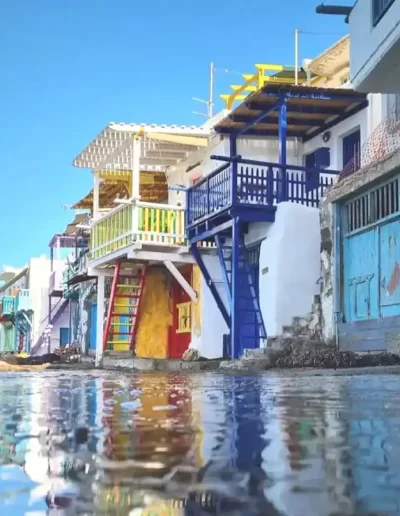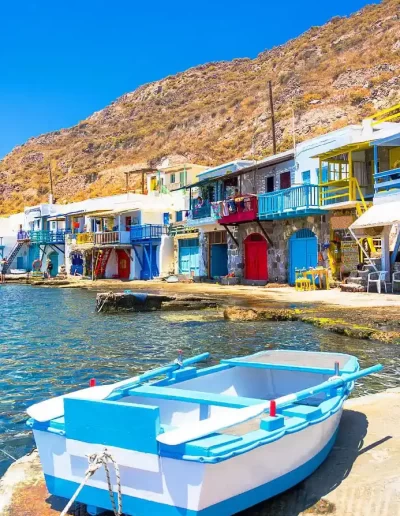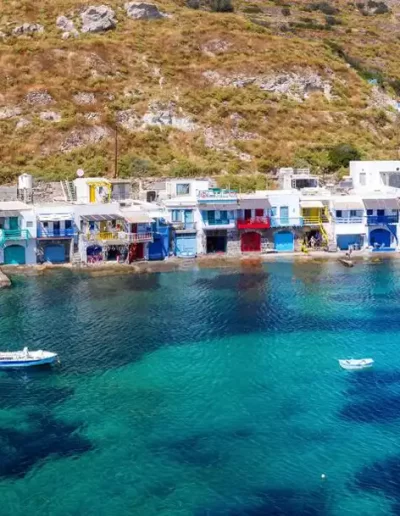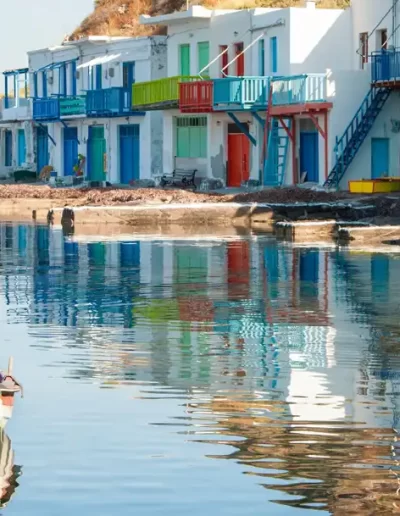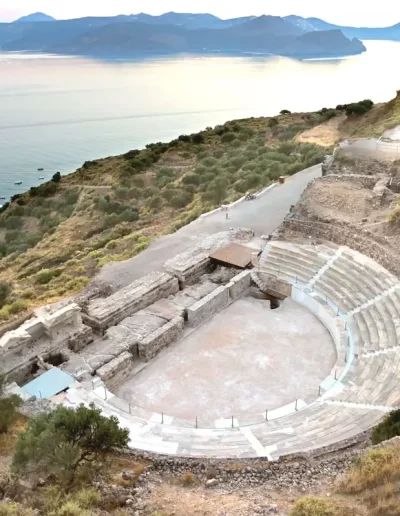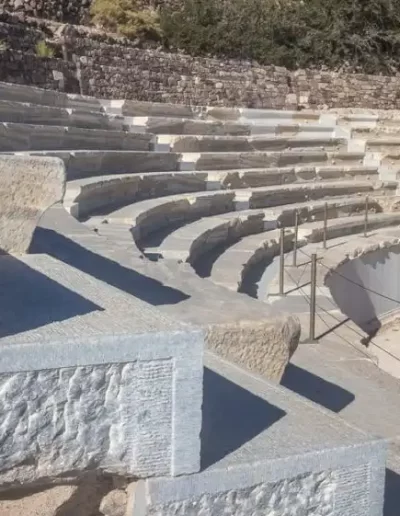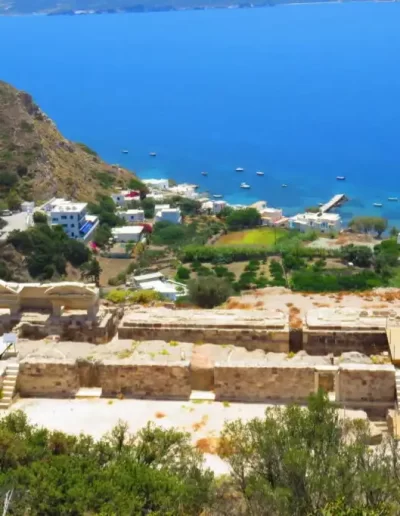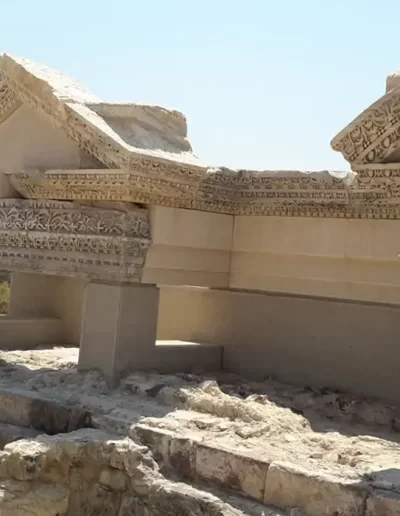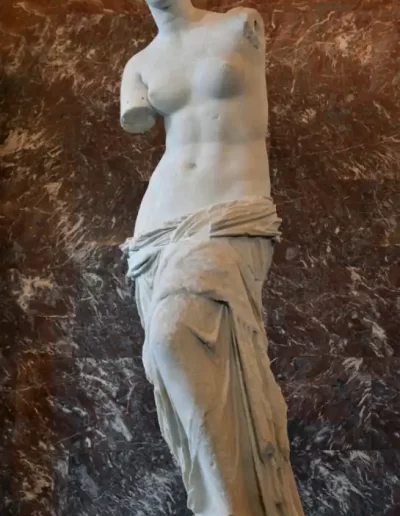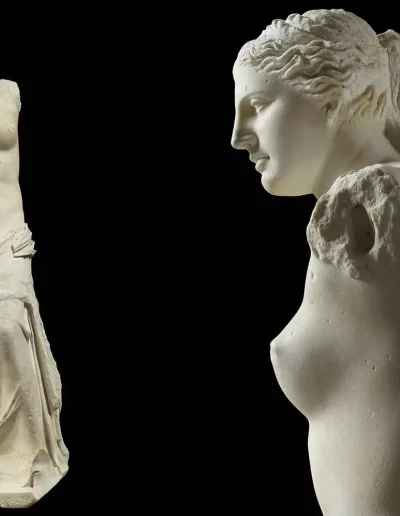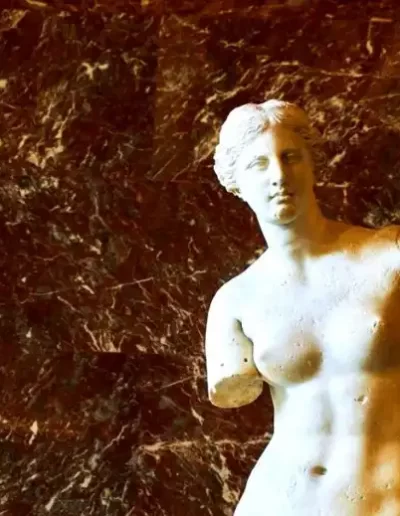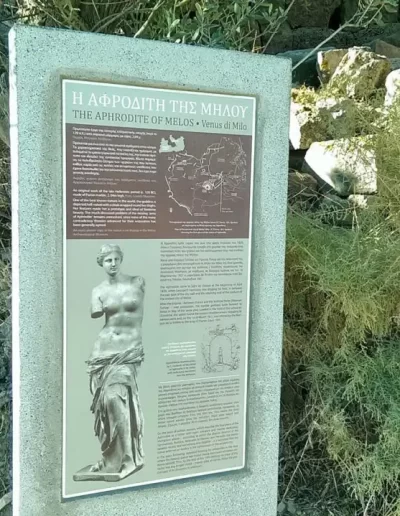
Traditional
Boat house
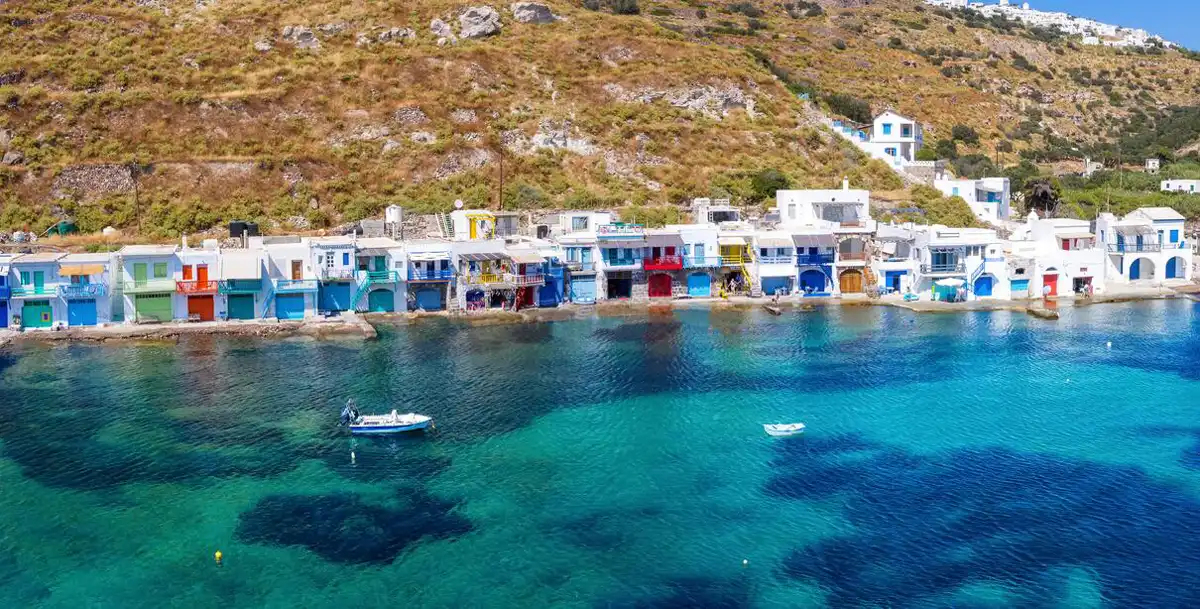
Klima Village
Fisherman’s House
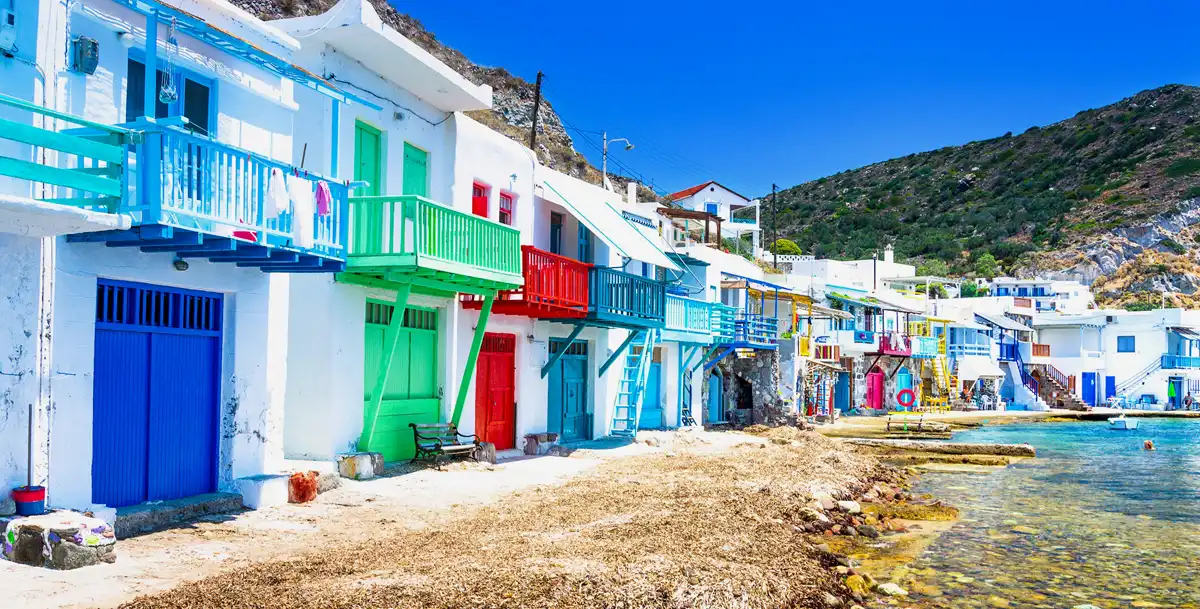
Syrma House
By The Sea
Klima village
Turquoise
Fisherman’s Syrma House Klima Village
The settlement as we roughly know it today began to be created around the 1920s as it was proven by photographs of the time. Some of the Residents from the nearby villages of Trypiti and Plaka, who’s main occupation was fishing, built small one-story houses to keep their boats safe during the winter (boathouses), while in the summer they visited with their families.
In the decades from the 1960s onward, the upper floor was also built, which served as a summer holiday home
Klima Village Milos island
The reason why Klima has become popular during modern times is the famous boat houses known as “syrmata” the old traditional two-level houses that were used by local fishermen during the previous century.
The ground floor would be used as a boat storage and the first floor as a residence. The most special thing about these houses is their water placement and their wooden doors and windows that are painted in bright colors.
These days, most of them have been restored and are being used as studios accommodation facilities for tourists, making it possible to spend your vacation in Milos with the sea at your doorstep.
Their small housing capacity combined with the romantic atmosphere of the village makes them an ideal option for couples.
The Spectacular Ancient Theatre of Milos
The ancient theater is located in Trypiti, the area where the ancient city of Milos stretches and is partly excavated.
The natural slope of the area was used for the cavea, which has the typical horseshoe shape of ancient Greek theaters. The seven tiers with up to 9 rows of white marble seats have been revealed in the cavea. Each row has four to five seats.
The extension of the cavea upwards is not known.
The discovery of a masterpiece
The famous Venus de Milo statue (Afrodite of Milos which is currently housed in the
Louvre Museum of Paris was discovered in this region in 1820.
The Venus de Milo (Greek: Αφροδίτη της Μήλου, Aphroditi tis Milou) is an ancient Greek statue and one of the most famous works of ancient Greek sculpture. Initially it was attributed to the sculptor Praxiteles, but based on an inscription that was on its plinth, the statue is now thought to be the work of Alexandros of Antioch.
The Greek goddess of love
Created sometime between 130 and 100 BC, the statue is believed to depict Aphrodite, the Greek goddess of love and beauty, although some scholars claim it is the sea-goddess Amphitrite, venerated on Milos. It is a marble sculpture, slightly larger than life size at 203 cm (6 ft 8 in) high. Part of an arm and the original plinth were lost following the statue’s discovery. It is currently on permanent display at the Louvre Museum in Paris. The statue is named after Aphrodite’s Roman name, Venus, and the Greek island of Milos, where it was discovered.

